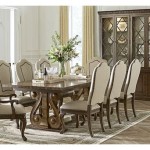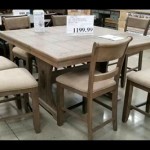Maximizing Space: Integrating Large Furniture in Small Rooms
The challenge of incorporating large furniture pieces into a small room is a common predicament in contemporary living. Whether due to space limitations in apartments, downsizing, or a preference for certain furniture styles, individuals often grapple with how to balance comfort and functionality within compact environments. Successful integration requires careful planning, strategic selection, and a keen understanding of spatial dynamics. This article explores key considerations and techniques for effectively incorporating large furniture into small rooms, ensuring a harmonious and livable space.
Prioritizing Needs and Defining the Purpose of the Room
Before selecting any furniture, a critical first step involves defining the primary purpose of the room. Is it a living room designed for relaxation and entertainment? A bedroom focused on sleep and storage? Or a home office requiring productivity and organization? Clearly identifying the room's function will dictate the essential furniture pieces and allow for a more focused approach to selection. This process helps to avoid impulse purchases and ensures that each item contributes to the overall functionality of the space.
Once the function is established, individuals must evaluate their specific needs. Consider the number of people who will regularly use the room. How often will it be used for entertaining? What activities will typically take place in the space? These questions guide the prioritization of furniture. For example, in a small living room primarily used for personal relaxation, a large, comfortable armchair might be prioritized over a bulky sectional sofa. Conversely, if the room frequently hosts guests, a sofa bed or modular seating arrangement may be more practical, despite its larger footprint. The goal is to determine which large furniture pieces are truly essential to fulfilling the room's primary function and meeting the user's specific requirements.
Furthermore, assessing existing furniture and potential for repurposing is crucial. Perhaps a smaller version of a desired large item exists, or an existing piece can be modified or refinished to better suit the space. Before committing to new purchases, exploring existing resources can save both money and valuable square footage. Inventorying and critically evaluating existing furniture represents a responsible and cost-effective approach to space planning.
Strategic Selection: Optimizing Size, Style, and Functionality
After defining the room's purpose and prioritizing needs, the next stage involves selecting large furniture pieces that are appropriately sized, styled, and functional for the small space. This requires careful consideration of dimensions, visual weight, and multipurpose capabilities.
Size is undoubtedly paramount. Opting for furniture with a smaller footprint, even within the "large" category, can make a significant difference. Measuring the room dimensions meticulously is essential before considering any purchase. Create a floor plan, either digitally or using graph paper, to visualize how the furniture will fit within the available space. Consider leaving ample room for circulation and movement to prevent the room from feeling cramped and cluttered. Sofas with slimmer arms, chairs with open backs, and coffee tables with slender legs can all contribute to a more spacious feel. When choosing a bed, consider a platform bed with built-in storage or a bed frame that maximizes vertical space. By carefully selecting furniture with smaller dimensions, individuals can enjoy the comfort and style of large pieces without sacrificing functionality and maneuverability.
Beyond size, the style of the furniture plays a crucial role in creating a visual impression of spaciousness. Light-colored furniture tends to recede visually, making a room feel larger and airier. Conversely, dark-colored furniture can absorb light and make a room feel smaller and more enclosed. Choosing furniture with clean lines and minimal ornamentation also contributes to a more streamlined and less cluttered appearance. Avoiding overly ornate or heavily patterned furniture can prevent the room from feeling overwhelming. Clear acrylic or glass furniture pieces can further enhance the sense of openness by allowing light to pass through and minimizing visual obstructions. The use of mirrors can also strategically expand the perception of space by reflecting light and creating the illusion of depth.
Multifunctional furniture offers a valuable solution for optimizing space in small rooms. Sleeper sofas provide comfortable seating during the day and transform into a bed for overnight guests. Storage ottomans offer both seating and hidden storage for blankets, pillows, or other items. Coffee tables with lift-top mechanisms provide a convenient surface for dining or working while also revealing storage compartments underneath. Choosing furniture with built-in storage or convertible features allows individuals to maximize the utility of each piece and minimize the need for additional storage solutions. This approach is particularly beneficial in smaller apartments or studios where every square foot counts.
Spatial Dynamics: Arrangement and Organization for Optimal Flow
Even with carefully selected furniture, effective spatial arrangement and organization are essential to maximizing the functionality and aesthetic appeal of a small room. Strategic furniture placement can significantly impact the perception of space and ensure a comfortable and livable environment.
Prioritizing a clear and unobstructed pathway through the room is fundamental. Avoid placing large furniture pieces directly in front of doorways or windows, as this can impede movement and block natural light. Arrange furniture to create a natural flow and facilitate easy navigation. Consider the placement of smaller accent pieces as well, ensuring they do not obstruct pathways or create visual clutter. By optimizing the flow of movement, individuals can make the room feel more spacious and inviting.
Utilizing vertical space is another essential strategy for maximizing storage and minimizing floor clutter. Tall bookshelves, wall-mounted shelves, and vertical storage units can provide ample storage without taking up valuable floor space. Hanging artwork or mirrors vertically can draw the eye upwards and create a sense of height. Consider using the space above doorways or windows for additional storage or decorative displays. By maximizing vertical space, individuals can free up floor space and create a more organized and visually appealing environment.
Creating distinct zones within the room can also enhance functionality and visual appeal. Define separate areas for different activities, such as a reading nook, a workspace, or an entertainment area. Use rugs, furniture placement, or changes in wall color to delineate these zones. For example, a large area rug can define the living area within a studio apartment, while a desk placed in a corner can create a dedicated workspace. By creating distinct zones, individuals can make the room feel more organized and purposeful, even within a limited space. The strategic use of lighting, with layered sources to enhance different zones, can further improve the overall ambiance and functionality of the room.
In summation, successfully integrating large furniture into small rooms demands a strategic and thoughtful approach. Defining the room's purpose, selecting appropriately sized and functional furniture, and optimizing spatial arrangement are crucial steps in creating a harmonious and livable environment. By carefully considering these factors, individuals can transform a potentially cramped and cluttered space into a comfortable and stylish haven.

How To Use Full Scale Decor Make A Small Space Feel Bigger

Can You Put Large Furniture In A Small Room

How To Arrange A Small Bedroom With Large Furniture Youtube

Small Space Furniture S You Need To Know White Luxury Homes

51 Inspiring Small Living Rooms Using All Available Space

Small Space Big Style Home Zone Furniture The Blog

9 Ways To Make A Small Room Look Bigger Ooba

How To Arrange Furniture In A Small Living Room Setting For Four Interiors
:strip_icc()/cdn.cliqueinc.com__cache__posts__191613__small-living-room-ideas-191613-1508786998763-main.700x0c-d7f8c9e292714d96bb063798d2efabe6.jpg?strip=all)
35 Designer Approved Small Living Room Ideas

15 Best Small Bedroom Decorating Ideas To Make It Look And Feel Bigger








